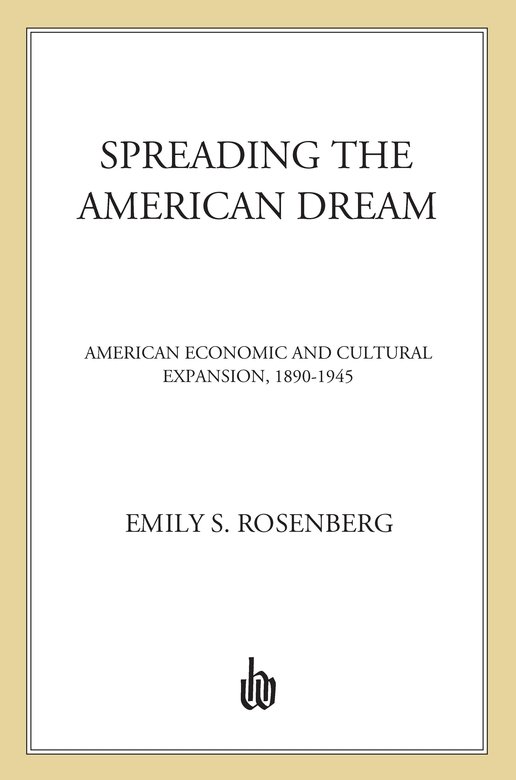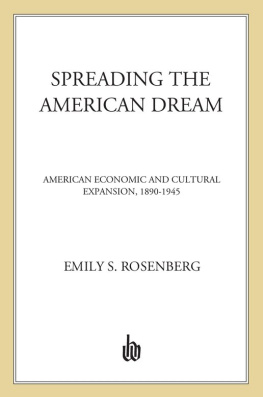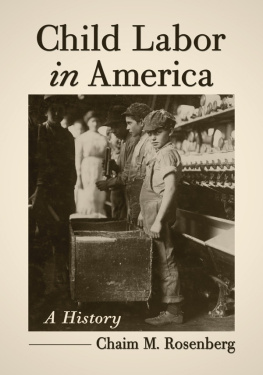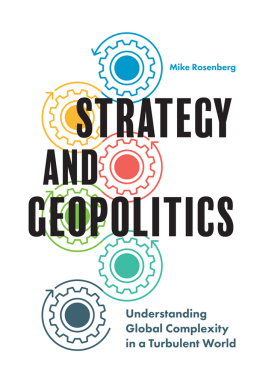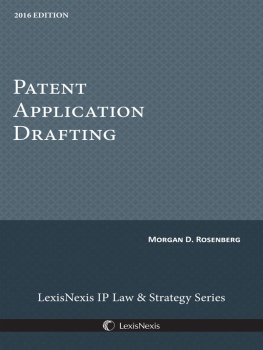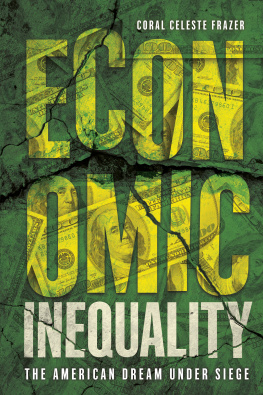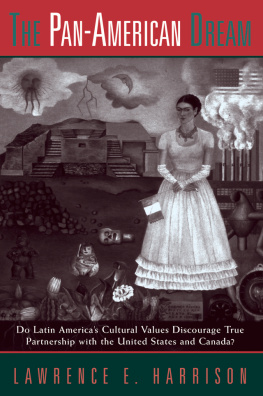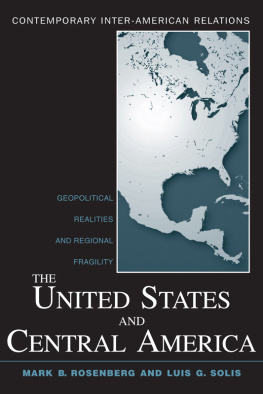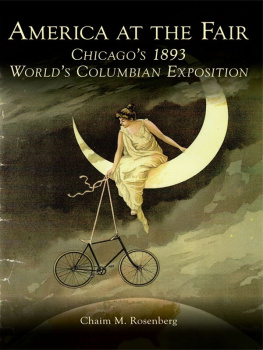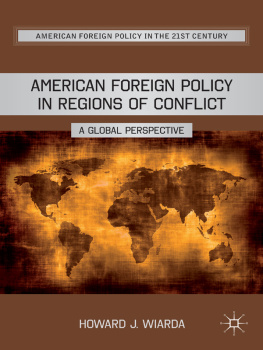DURING the past fifteen or twenty years, there has been a silent revolution in the writing of American histories of foreign relations. Examining the roots of American expansionism regained its prominence as a theme, especially after the publication of William A. Williamss Tragedy of American Diplomacy (1959). Then, taking cues from domestic historians such as Louis Galambos and James Weinstein, scholars also began to explore the implications for foreign relations of the new organizational synthesis and the rise of the corporate state. Interest in expansion and in new organizational structures has taken historians in new directions, broadening the horizons of diplomatic history far beyond the traditional issues of war and peace and official government policy. There is now a rich and growing literature on the development of a foreign-affairs bureaucracy; the role of multinational corporations; issues concerning trade, raw materials, investment, and international exchange; systems of international communications and transportation; and various kinds of cultural expansion. This book is an attempt to synthesize this broad literature, much of which relates to economic and cultural trends and thus still does not fit conveniently into most textbook treatments. It also flows from my own primary research on the period 19141929.
The following selective bibliography contains the secondary studies that I have found most helpful and that are available inmost college libraries. Although I have also consulted primary materials, I have included these sources only in rare instances.
I: INTRODUCTION
Information on the Columbian Exposition is available in Rossiter Johnson, A History of the Worlds Columbian Exposition, 4 vols. (1897); David F. Burg, Chicagos White City of 1893 (1976); and Reid Badger, The Great American Fair: The Worlds Columbian Exposition and American Culture (1979). To understand the liberal underpinnings of American foreign relations, good places to start would be Louis Hartz, The Liberal Tradition in America: An Interpretation of American Political Thought Since the Revolution (1955); Charles Beard, The Idea of National Interest (1934); and N. Gordon Levin, Woodrow Wilson and World Politics: Americas Response to War and Revolution (1968). Many of the books cited below elaborate on this theme in specific situations.
II: CAPITALISTS, CHRISTIANS, COWBOYS
On economic developments that affected the overseas expansion of the American economy, see Edward C. Kirkland, Industry Comes of Age: Business, Labor, and Public Policy, 1860-1897 (1961); Fred A. Shannon, The Farmers Last Frontier: Agriculture, 1860-1897 (1945); Alfred Chandler, Jr., The Visibly Hand: The Managerial Revolution in American Business (1977); and Howard P. Schonberger, Transportation to the Seaboard: The Communication Revolution and American Foreign Policy (1971). The export boom is treated especially well in David E. Novack and Matthew Simon, Commercial Responses to the American Export Invasion, 1871-1914: An Essay in Attitudinal History, Explorations in Entrepreneurial History 3 (1966), 121-47. The standard books on American investments are Cleona Lewis, Americas Stake in International Investments (1938), and Mira Wilkins, The Emergence of Multinational Enterprise: American Business Abroad from the Colonial Era to 1914 (1970). Wilkinss bibliography should be consulted for the hundreds of histories on individual companies and entrepreneurs. Robert Bruce Davies, Peacefully Working to Conquerthe World: Singer Sewing Machines in Foreign Markets, 1854 - 1920 (1976) is an enlightening study of the evolution of one of Americas oldest international companies.
Helpful studies of specific geographical areas include John Dunning, American Investment in British Manufacturing Industry (1958); Ian Lumsden, ed., The Americanization of Canada (1970); Robert S. Schwantes, Japanese and Americans (1955); Michael Hunt, Americans in the China Market, Business History Review 51 (1977), 277-307; Sherman Cochran, Big Business in China: Sino-Foreign Rivalry in the Cigarette Industry, 1890-1930 (1980); David M. Pletcher, Mines and Progress: Seven American Promoters in Mexico, 1867-1911 (1958); Clarence Clendenen et al., Americans in Africa, 1865-1900 (1966). Both economic and cultural outreach before 1890 is treated in Milton Plesurs excellent book, Americas Outward Thrust: Approaches to Foreign Affair, 1865-1890 (1971).
On the American missionary movement in China and the Middle East, see Paul Varg, Missionaries, Chinese, and Diplomats, 1890-1952 (1958), and John De Novo, American Interests and Policies in the Middle East, 1900-1939 (1963). Valentin H. Rabe, The Home Base of American China Missions, 1880-1920 (1978) brings the organizational synthesis to the study of missionary activities. The activities of the YMCAs Student Volunteers are dealt with in the fine study by Charles H. Hopkins, History of the Y.M.C.A. in North America (1951); in William H. Morgan, Student Religion during Fifty Years (1935); and the fascinating study by Shirley S. Garrett, Social Reformers in Urban China: The Chinese Y.M.C.A ., 1895-1926 (1970).
Works dealing with other types of cultural contact include Henry Blumenthal, American and French Culture, 1800-1900: Interchanges in Art, Science, Literature, and Society (1977); Richard H. Heindel, The American Impact on Great Britain, 1898-1914 (1968); John Burke, Buffalo Bill (1973). Two of the most important books for this and subsequent chapters are Merle Curti, American Philanthropy Abroad (1963), and Merle Curti and Kendall Birr, Prelude to Point Four: American Technical Missions Overseas, 1838-1938 (1954).
III: THE PROMOTIONAL STATE
General works dealing with American expansion include Charles Beard, The Idea of National Interest (1934); Benjamin H. Williams, Economic Foreign Policy of the United States (1929) and American Diplomacy (1936); Albert K. Weinberg, Manifest Destiny: A Study of Nationalist Expansionism in American History (1935); William A. Williams, The Tragedy of American Diplomacy (1959), The Roots of the Modern American Empire: A Study of the Growth and Shaping of Social Consciousness in a Marketplace Economy (1969), and Empire as a Way of Life (1980); Walter LaFeber, The New Empire: An Interpretation of American Expansion, 1860-1898 (1963); David Healy, United States Expansion: The Imperialist Urge in the 1890s (1970); Charles S. Campbell, The Transformation of American Foreign Relations, 1865-1900 (1976); Akira Iriye, From Nationalism to Internationalism: U.S. Foreign Policy to 1914 (1977); and Richard Drinnon, Facing West (1980). Tom E. Terrill, The Tariff, Politics, and American Foreign Policy, 1874-1901 (1973) deals with an important aspect of economic policy.
